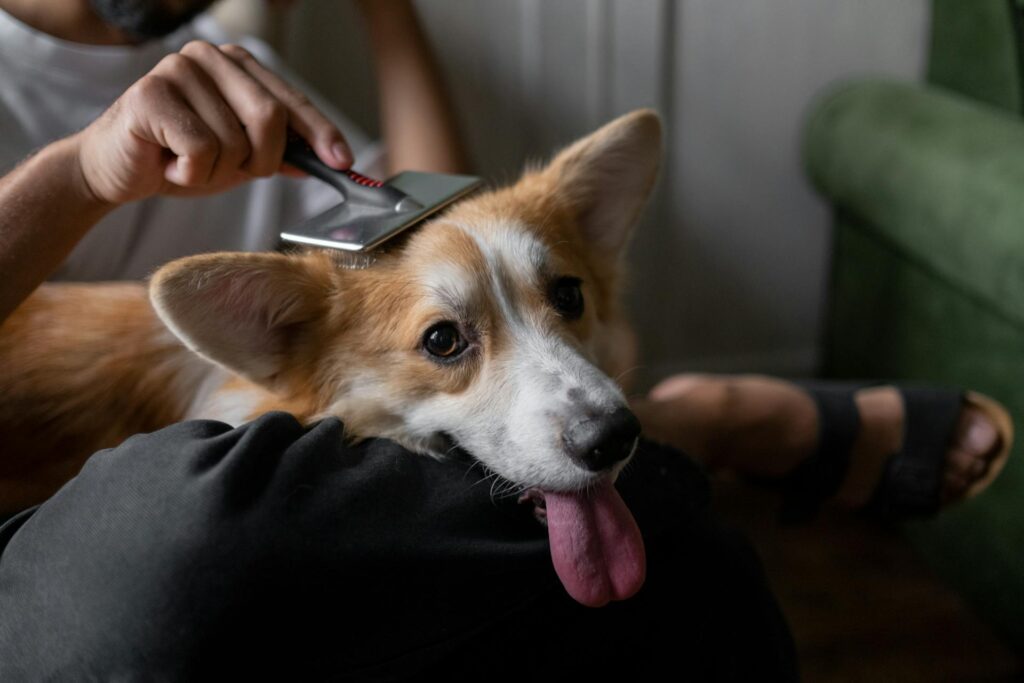A dog’s coat is more than just beautiful fur — it’s a reflection of their overall health and happiness. Regular grooming and brushing don’t just make your dog look great; they also prevent skin problems, improve circulation, and strengthen the bond between you and your furry friend.
In this guide, we’ll explore the best coat care and brushing techniques for different dog breeds, along with expert tips to keep your pet’s coat soft, clean, and full of shine.
_____
🐶 Understanding Your Dog’s Coat Type
Every breed has a unique coat type that requires specific care. Before grabbing a brush, it’s important to understand what kind of coat your dog has:
Short-Coated Breeds (Beagle, Boxer, Dalmatian) – Low maintenance, but still benefit from weekly brushing to remove dead hair and distribute natural oils.
Double-Coated Breeds (Golden Retriever, Husky, German Shepherd) – Have a dense undercoat that sheds seasonally; regular brushing prevents matting and overheating.
Long-Haired Breeds (Shih Tzu, Afghan Hound, Collie) – Require daily brushing to prevent tangles and mat buildup.
Curly or Wavy Coats (Poodle, Bichon Frise, Labradoodle) – Need frequent brushing and trimming to maintain shape and prevent knots.
Knowing your dog’s coat type helps you choose the right tools and schedule for grooming.
🪮 Essential Brushing Tools for Every Coat
Having the right tools makes grooming easier, faster, and more comfortable for your pet.
Recommended brushes and combs:
Slicker Brush: Perfect for removing loose fur and tangles in medium to long coats.
Bristle Brush: Ideal for short-haired dogs — adds shine and distributes natural oils.
Undercoat Rake: Helps remove dead undercoat in shedding breeds.
Pin Brush: Gentle option for curly or wavy coats.
Comb: Great for finishing touches around the ears, tail, and paws.
🧴 Pro Tip: Always check the brush’s pins or bristles — they should be smooth and rounded to avoid scratching your dog’s skin.
🫧 Brushing Frequency: How Often Is Enough?
The golden rule: brush as often as needed to prevent tangles or shedding buildup.
| Coat Type | Brushing Frequency | Notes |
|---|---|---|
| Short coat | Once a week | Use a bristle brush or grooming mitt |
| Medium coat | 2–3 times per week | Focus on areas prone to tangles |
| Long or curly coat | Daily | Keep fur soft, prevent mats |
| Double coat | Several times weekly during shedding season | Use undercoat rake for best results |
🐾 Tip: Always brush before bathing — water tightens mats and makes them harder to remove.
🌿 Healthy Coat Starts from the Inside
A shiny coat begins with good nutrition. Dogs need high-quality food rich in omega-3 and omega-6 fatty acids, vitamins A and E, and protein.
Coat-boosting foods include:
Salmon and sardines
Flaxseed or fish oil supplements
Eggs (cooked)
Carrots and sweet potatoes (for vitamin A)
Hydration is also essential — dry skin can make coats dull and itchy.
🧼 Bathing and Post-Brush Care
Brushing and bathing go hand in hand.
Bathe your dog every 4–6 weeks (more often for active or long-haired breeds).
Use a mild, dog-specific shampoo to preserve natural oils.
After bathing, towel-dry gently, then use a blow dryer on low heat while brushing to prevent tangles.
🫧 Avoid human shampoos — they can dry out your dog’s skin and damage the coat.
💕 Grooming as Bonding
Beyond hygiene, grooming is one of the best ways to strengthen your bond with your dog. Regular brushing relaxes your pet, helps detect early signs of skin irritation, and creates trust.
Make grooming a calm experience — use gentle strokes, reward with treats, and speak softly to keep your dog relaxed.
🏁 Conclusion
Proper coat care is about consistency, not complexity. With the right tools, good nutrition, and regular brushing, you can keep your dog’s coat glossy, healthy, and tangle-free.
Whether you have a short-haired Beagle or a long-haired Shih Tzu, a few minutes of grooming each day goes a long way — and your dog will love you even more for it.




